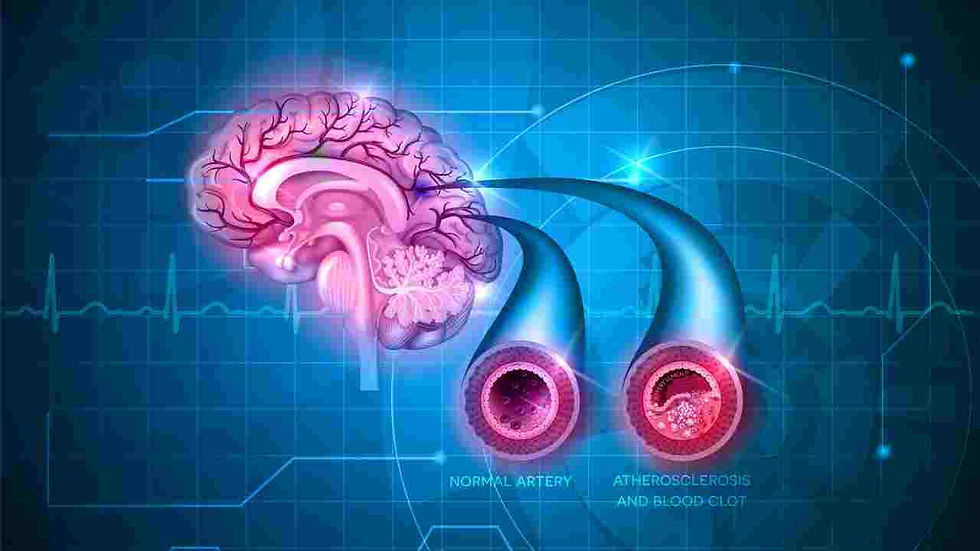Salvage treatment for meningioma – Brachytherapy
- abhishek6945
- May 23, 2023
- 3 min read
A quick guide to meningiomas
Meningiomas are benign (non-cancerous) brain tumors arising from the meninges or protective membranes around the brain and spinal cord. The tumor is most often located in an area of the brain called the temporal lobe which can cause hearing loss, changes in balance, difficulty in speaking, headaches, or confusion.
According to a recent news update, an estimated 37,000 people with meningioma are reported annually in the US. These tumors are common in people older than 60 years with a male-to-female ratio of 9:1 and are often misdiagnosed. Most meningiomas are benign but this does not mean they will always remain so; some eventually become malignant (cancerous) and can migrate to adjacent structures and cause permanent damage, if not treated quickly and appropriately [1], [2]. So, clinicians are now looking into novel treatment options, such as brachytherapy.
The future of brachytherapy in the treatment of meningiomas

Many patients with meningiomas do not qualify for resection or stereotactic surgery for various reasons. One major reason is that there is a large amount of microscopic residual tumors left out after resection. This affects the patient's prognosis. However, in some cases, it may be difficult or impossible to remove this microscopic residual tumor as much as possible without exposing the brain parenchyma to additional radiation. Some oncologists believe brachytherapy could be an effective treatment in such cases [2].
Brachytherapy is an alternative therapeutic approach in which external radiation is used to treat meningiomas. It involves the placement of radioactive seeds to destroy confined malignant tumors by causing thermal damage. The cancer cells in the body act as antennae and receive high-radio frequency radiation energy from an external linear accelerator (X-ray).
Several theoretical advantages of brachytherapy are associated with the treatment of recalcitrant meningiomas, which include:
The delivery of high doses of radiation directly into the surgical cavity.
Limited exposure of previously radiated brain parenchyma to additional radiation.
Used to treat the microscopic disease that remains after gross resection, causing recurrences.
Brachytherapy is an established therapeutic modality for the treatment of meningiomas. It involves the placement of radioactive seeds in brain tissue after surgery, and can be carried out in two ways:
Simple radiosurgery where radiation is delivered to the tumor sites.
As a form of short-term stereotactic radiotherapy for pathological intracranial injuries [3].
Brachytherapy is an appealing therapeutic option for recurrent meningioma but has not been widely used. The majority of patients who qualify for brachytherapy have previously undergone surgery, frequently several procedures, and radiotherapy. This results in scarring and compromised vasculature in the skin, soft tissue, and dura, which can hinder wound healing. The most frequent initial side effects after tumor removal and brachytherapy implants are wound problems, such as wound collapse or infection. Several case series demonstrate good long-term survival, suggesting that brachytherapy may be a beneficial adjuvant for recurring high-grade tumors, despite the lack of controlled trials comparing the treatment of meningiomas with or without brachytherapy. There are a number of potential complications, such as radiation necrosis, poor wound healing, hydrocephalus, and infection [4]. The reason for this may be due to the misconception about the radiation dose and other factors, especially for complex brain tumors.
Opinion on meningioma brachytherapy
Brachytherapy is an effective salvage treatment for malignant meningiomas and other brain tumors, circumventing the need for radical surgery. Future research must be directed toward new isotopes that could have fewer issues and higher safety levels.
References
1. “Meningioma - Statistics,” Cancer.Net, Jun. 25, 2012. https://www.cancer.net/cancer-types/meningioma/statistics (accessed Dec. 15, 2022).
2. M. McMillen, “Meningioma Brain Tumor: Causes, Symptoms, and Treatment,” WebMD. https://www.webmd.com/cancer/brain-cancer/meningioma-causes-symptoms-treatment (accessed Dec. 15, 2022).
3. M. A. Mooney, W. I. Essayed, V. Patel, P. M. Devlin, and O. Al-Mefty, “Brachytherapy as Salvage Treatment for Meningioma With Malignant Progression After Exhausting Other Treatment Options: 2-Dimensional Operative Video,” Operative Neurosurgery, vol. 22, no. 5, p. e215, May 2022, doi: 10.1227/ons.0000000000000129.
4. M. St, S. Th, T. Pv, and M. Mw, “Brachytherapy for meningiomas,” Handbook of clinical neurology, vol. 170, 2020, doi: 10.1016/B978-0-12-822198-3.00049-5.










Comments